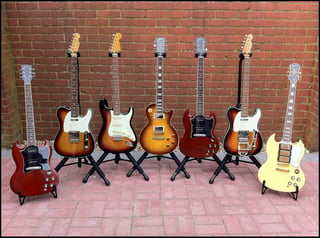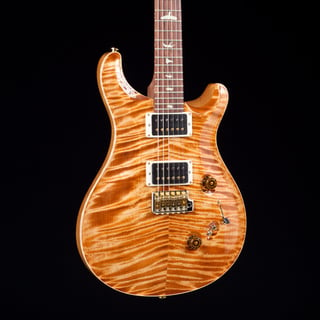How many guitars are too many guitars? That’s a question guitar players are usually confronted with by others, asked with an accompanying eye-roll by those in their life who don’t play. Anyway, I have customers who have asked themselves how many guitars are too many and truthfully if they have to ask they already know the answer. We guitar players are not always, but usually alone in the household. We know we’re all a bit mad here. We’re a small but passionate minority in the general population but we somehow find each other and offer all kinds of opinions on everything in guitardom.
I sell guitars for a living so I’m an enabler of sorts and my name is known to the wives of many satisfied customers. Daily I deal with this question, it comes with the job. I can offer some insight into the phenomenon known as Gear (or Guitar) Acquisition Syndrome, heretofore referred to as G.A.S. Do you have G.A.S.? You know if you do and you know what? Everyone else does too. You can’t hide it. The people around you have to live and deal with it. So here’s something to consider that I heard way back and share almost every day. If you have more than two of anything, it’s a collection. You should have one electric and one acoustic if you’re serious about playing. The technique developed to play on each compliment your skills on both and I think it’s a big part of being a well rounded player.

Anyway, here’s an inside perspective from the builders and manufacturers that I deal with. It may seem obvious, but those who build guitars do so with the assumption that they will be played for a lifetime and beyond. Manufacturers want you to play guitar. The most beautifully crafted guitar must still function at the highest level, and for a veritable work of art to function as it was intended to; to be an instrument. A guitar has to be played or will suffer from benign neglect. This is more obvious with acoustic guitars but electrics trapped in a case or stuck in a stand will eventually suffer from being ignored.
Years ago I watched a 60 Minutes episode about an elderly gentleman who was soon retiring from a pretty unique job. He was a violinist who had to pick up and play each of a vast collection of Stradivarius and similar caliber violins in a museum or collection in Rome. The crew followed him around talking to him while he was picking up violins and just lighting them up! He’d burn a riff here shred a little there, all because he said these rare and ancient instruments needed to be played to stay alive. He loved his work and the story stuck with me because I have more than two guitars, I want them to “stay alive” and I try to justify owning them for practical reasons as well as their sentimental and aesthetic value. Here is the woman that replaced him.

Getting back to my point about acoustic and electric guitar technique complimenting each other, I know I’m probably preaching to the choir about how different electric guitars affect the way some of us might play but that is the point I stress when customers are considering a new guitar. We all want a positive return on our investment but in what way? Is this new guitar a lateral move, similar to something you already own and within the comfort zone of familiarity? Or, is this guitar unlike others you own and will encourage exploration of different ways to express yourself. Here’s my totally biased suggestion of some essential must-haves for a well rounded collection of guitars that will inspire you to play and hopefully help you play better.
I’m not going to get into specifics regarding acoustic guitars, there just too much subtlety and nuance to an acoustic purchase and that’s enough subject matter for another blog. I’m making broad strokes: you can then get surgical about these suggestions later. First, I love to suggest this worthy investment in American guitar design that comes with a hard-shell case and isn’t the price of a used car; get yourself a Stratocaster. Jimi, SRV, Clapton, Yngwie, Blackmore, Sambora…enough notable guitarists recognizable with initials or one name are associated with this instrument that it’s reason enough to own one. Every guitar player I know has at least one Strat. One could make the same case for a Telecaster but I’m a Strat guy and it’s my blog. At some point you should find your very own Les Paul. It’s out there waiting for you somewhere. It’s the Grand Piano of electric guitars and if you can you should definitely get one. I have a Paul Reed Smith Custom 24. Ok, I have two of them and I call the Custom 24 my desert island guitar because if I only had one guitar to play, I can get my ya-yas out on Paul’s now classic fusion of the two aforementioned axes. A great hollowbody or semi-hollow body is definitely in order and there is a plethora for you to choose from heritage U.S. brands and models to very high quality international brands.

From there, you’re on your own as there are multiple variants of these guitars and I haven’t even touched on the so-called super-Strats of my youth that filled an important niche in my musical journey. Is there room for debate? Of course there is, that’s the give-take, push-pull of guitardom. Is there a cure for G.A.S.? No cure that doesn’t already lie within, so heal thyself if you feel you must. A final nod to acoustics in general, if you can have a 6, 12-string and a nylon string you’ll be doing better than most. There’s no wrong or right and the point is to play and appreciate the gift you give to yourself when you make the time to just do it!
Let us know if you liked this blog:


